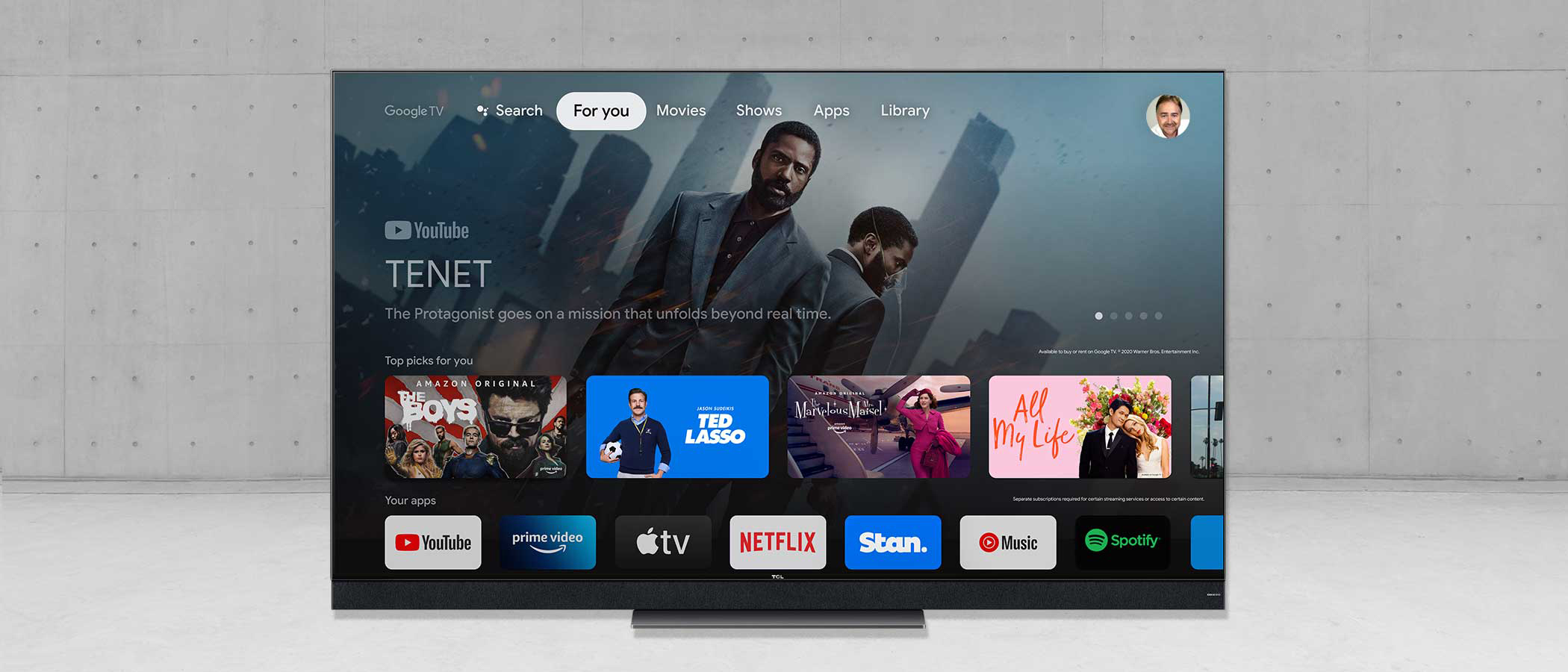TechRadar Verdict
This is a belter of a TV from China’s TCL in both technology and performance terms, with its Mini LED backlights and QD colour challenging OLED performance, while the Google TV interface and built-in Onkyo-branded soundbar allow easy standalone operation.
Pros
- +
Mini LED black levels
- +
8K screen resolution
- +
Google TV interface
- +
Integrated Onkyo soundbar
Cons
- -
Early set-up issues
- -
Regular tweaking for best results
- -
Do you need 8K?
Why you can trust TechRadar
With the X925, TCL brings together a number of key technologies that are pushing the boundaries of television performance in terms of both LCD panel visuals and smart operation.
TCL’s panel uses Mini LED backlighting, with thousands of separate LED backlights in hundreds of small groups delivering a fine level of control over local dimming – so fine, indeed, that it promises black levels on a par with OLED technology. Then in front of that backlighting it uses QD (quantum dot) nanotechnology to achieve a colour precision and range claimed to be significantly superior to OLED.
This is also an 8K-resolution screen, so you get four times the pixel count of Ultra High Definition (4K) panels, and a powerful processor to oversee upscaling, motion processing and more.
The X925 also benefits from its early implementation of Google TV, which builds on the Android TV operating system to offer a better recommendations-based home screen and other benefits.
All this and an integrated Onkyo-branded soundbar too. The question, then, is how well TCL can bring all these technologies together, and whether the performance matches the high claims made for it.
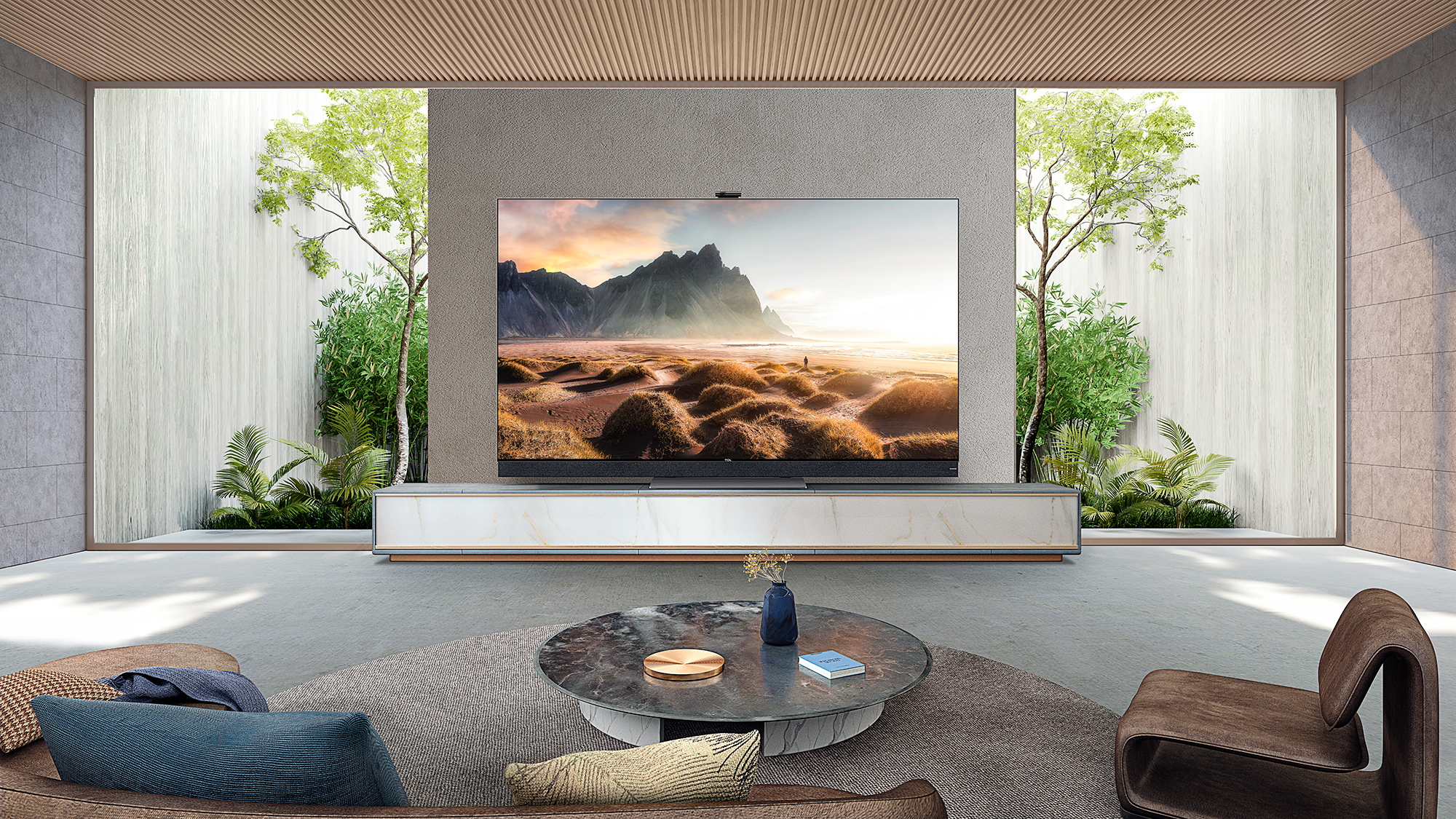
Design

Screen sizes available: 65/75 | Tuner: Yes | 4K: No, 8K! | HDR: Yes, inc. Dolby Vision | Panel technology: mini LED | Smart TV: Yes, Google TV | Curved: No, thank goodness | Dimensions: (hwd, with stand) 915 x 1147 x 309 mm | Weight: (with stand) 24.5 kg | 3D: No | Inputs: 4 x HDMI, USB 3.0, composite AV, Ethernet/Wi-Fi
Because of the substantial backlighting system, the 65-inch X925 we have under review is not as impressively thin as the ‘sheet-of-glass’-style OLED TVs available, or even edge-lit LED-LCDs. The panel thickness is 24mm, yet Samsung’s latest Mini LED 8K flagships get this down to 15mm, even on its 75-incher.
Still, with the TCL’s rear electronics extending back only around 60mm in total, that’s no impediment to wall-mounting, and rear depth is not something you’ll notice once the TV is in place, where you’ll be admiring instead the silver frame and the extremely small bezel gap between frame and image.
Sign up for breaking news, reviews, opinion, top tech deals, and more.
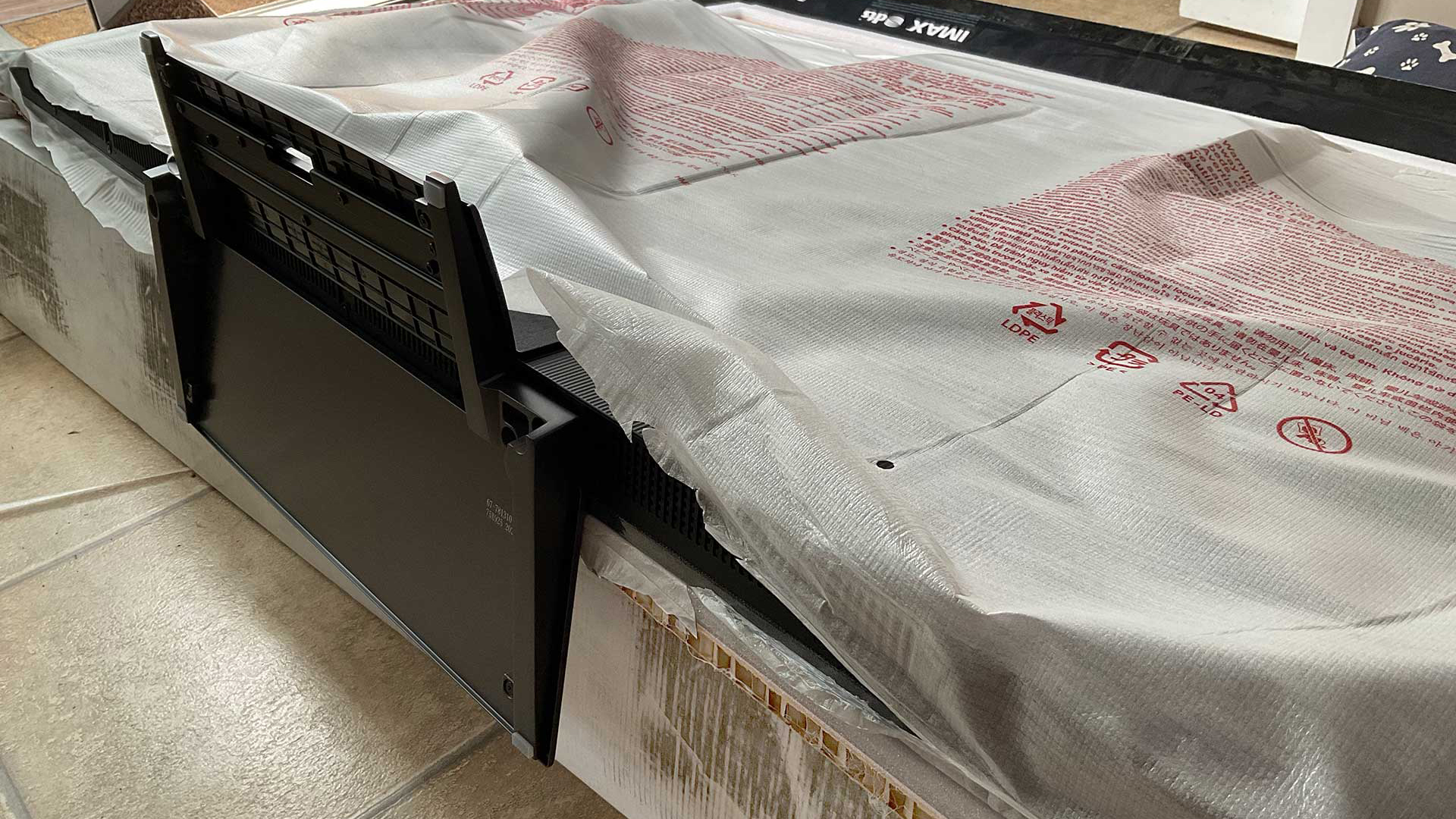
If you are bench-mounting the X925, it’s pleasingly simple to attach the supplied base stand with just four screws, following the instructions to lay the TV front-down on its box, though since the stand extends further forward than back, it might be even easier, and slightly less scary, to have the TV on its back.
Praise also for the remote control, which has the essential buttons suitably prioritised, as well as being thoroughly modern in having a dedicated Hey Google button for voice control, and six keys that take you direct to streaming services.

The inputs are all on the right, facing sideways, with four HDMI inputs including two which are 8K compatible, one with ARC/eARC (for running audio to an external sound system), and the last limited to 4K. Gamers get an Auto Low Latency mode, variable refresh rate to 120Hz, and AMD FreeSync compatibility.
There’s one USB 3.0 slot, a composite AV minijack with an adapter cable supplied, an Ethernet connection in addition to the TV’s high-spec Wi-Fi 6 option, and audio out available via optical digital and analogue minijack, in addition to that eARC-equipped HDMI socket.
Design TL;DR: The X925 is not superslim but is certainly stylish, and comes well-equipped with inputs suitable to an 8K TV, as well as high-potential Wi-Fi 6.
- Check out the best 65-inch TVs and best 75-inch TVs
Smart TV (Google TV)
TCL is not launching Google TV on its European models until their summer of 2022, but some global markets are getting it now, including Australia and the USA. Whether that makes us a test-bed is hard to say; we certainly experienced some issues during set-up that smacked of firmware that is not quite tweaked to perfection, shall we say.
But once running, the Google TV experience is impressive. It adds functionality to the usual Android TV, notably in compiling recommendations for the home screen from all the services to which you have subscribed, and also allowing voice search through all those services.
Cynics will note that to do so, Google gets you to sign off on letting it watch everything you do on all those services, giving them one more data-set for your ever-expanding personal profile. But the result is effective. Another bonus is being able to add to your watchlist from any smart device using what was Android’s Google Play Movies & TV app, now renamed Google TV. That saves a lot of scrolling through things on the TV itself.
Meanwhile you have access to every app under the Android TV sun, which covers every key video service, all five Australian catch-up apps, and most music services except Qobuz and Apple Music, though AppleTV+ is available. There is no more comprehensive smart platform on the market than this.
TCL also provides a camera which slots atop the TV, enabling Google Duo calls and allowing gesture control in certain modes, though it’s generally easier to use the remote control.
Smart TV TL;DR: There is no more comprehensive smart platform on the market than Android TV, and the Google TV enhancements make it still easier to use.
HD/SDR performance
With this TV being 8K, everything of lesser resolution is upscaled using the TV’s ‘AiPQ Engine’ processor. This also enhances the colour gamut of HD and SDR material to take advantage of the wide colour abilities, which here extend to 100% of the DCI-P3 colour volume compared with only around 70% from OLED panels.
All this the X925 achieves well; it is particularly adept at banishing colour banding in skies and sunsets, effectively blending low bit-rate shading into an even colour balance.
As with any TV, we’d recommend getting into the menus and tweaking settings to preference. If, like us, you find the default motion processing too severe, for example, TCL’s ‘movie’ mode is similar to ‘film-maker’ modes on other brands, removing all interpolated frames.
But it also invokes a warm colour gamut, which we suggest you correct in the expert colour settings, bringing the slider back from ‘warm’ to ‘neutral’. Put back a little motion control (de-blur on 3 and de-judder on 3, for example), and the result is a high-quality movie-like performance even from standard DVDs. Which is impressive considering the TV is then upscaling pixels by a factor of 20.
HD/SDR Performance TL;DR: Get into the menus a little and it’s fairly easy to get the X925 to deliver impressive results when upscaling even from DVD resolution to its full 8K display.
4K/HDR performance
Of course the performance shines best when delivering 4K material upscaled a mere four times to the 8K resolution of the panel. Native 8K content remains largely a promise for the future, when there may be some 8K streaming, some 8K PS5 gaming, though absolutely zero chance of an 8K disc format. To this add the inability of the human eye to resolve the difference between 8K and 4K on a 65-inch TV unless you sit within a metre of the screen – as TCL’s own literature admits.
Aside from the vague futureproofing, then, the main justification for an 8K panel today seems to be that it provides an entry ticket to all the best technologies of a given brand. If you want the true flagship TV, chances are it will come with 8K, whether you really need it or not.

With the Mini LED backlighting technology, on the other hand, there need be no such debate. It is wildly successful in delivering low-level blacks through its micro-level of local dimming, along with blazing suns and headlights within the same image.
Indeed TCL claims black levels down to 0.001 nits, the same as OLED, in combination with 20 stops of dynamic range compared with 19 stops for OLED. The only thing Mini LED isn’t good at is tiny dots of light on a dark background, such as a star-field. It can’t illuminate the individual pixels in the same way as front-emissive OLED panels.
The X925 is fully compatible with normal HDR, HDR10+ and Dolby Vision, with the last of these invoking a choice of Dolby Vision modes depending on your room environment. The results were often magnificent, with simply astounding detail available from video-sourced shows in particular.
From Netflix, streaming Jack Whitehall’s Travels With My Father in 4K Dolby Vision, some of the shots of cities and countryside looked more like demo reels than real-world content. Greens and reds can be eye-poppingly vivid – again the kind of impact more commonly associated with premium OLED, but here a good deal cheaper.
4K/HDR Performance TL;DR: The X925 is a true top-level performer, especially when playing 4K video-sourced material with High Dynamic Range.
Sound
With any large screen, there’s a strong argument for an external sound system, especially when the TV, like the X925, can pass surround and Dolby Atmos soundtracks to an external receiver and speaker system, so enabling true immersive audio to complement the TV’s immersive imaging.
What we wouldn’t recommend here is adding a soundbar, because the X925’s own Onkyo-branded bar is more than serviceable. It’s able to deliver a wide spread of front audio, with the ‘movie’ sound mode useful for sharpening up dialogue and filling out the bass from that rear ‘subwoofer’.
Of course it can’t challenge the depth of a real sub, nor the dynamics even of a good pair of active or passive speakers, let alone the immersion of a full speaker system, but it’s far ahead of any TV without its own soundbar.
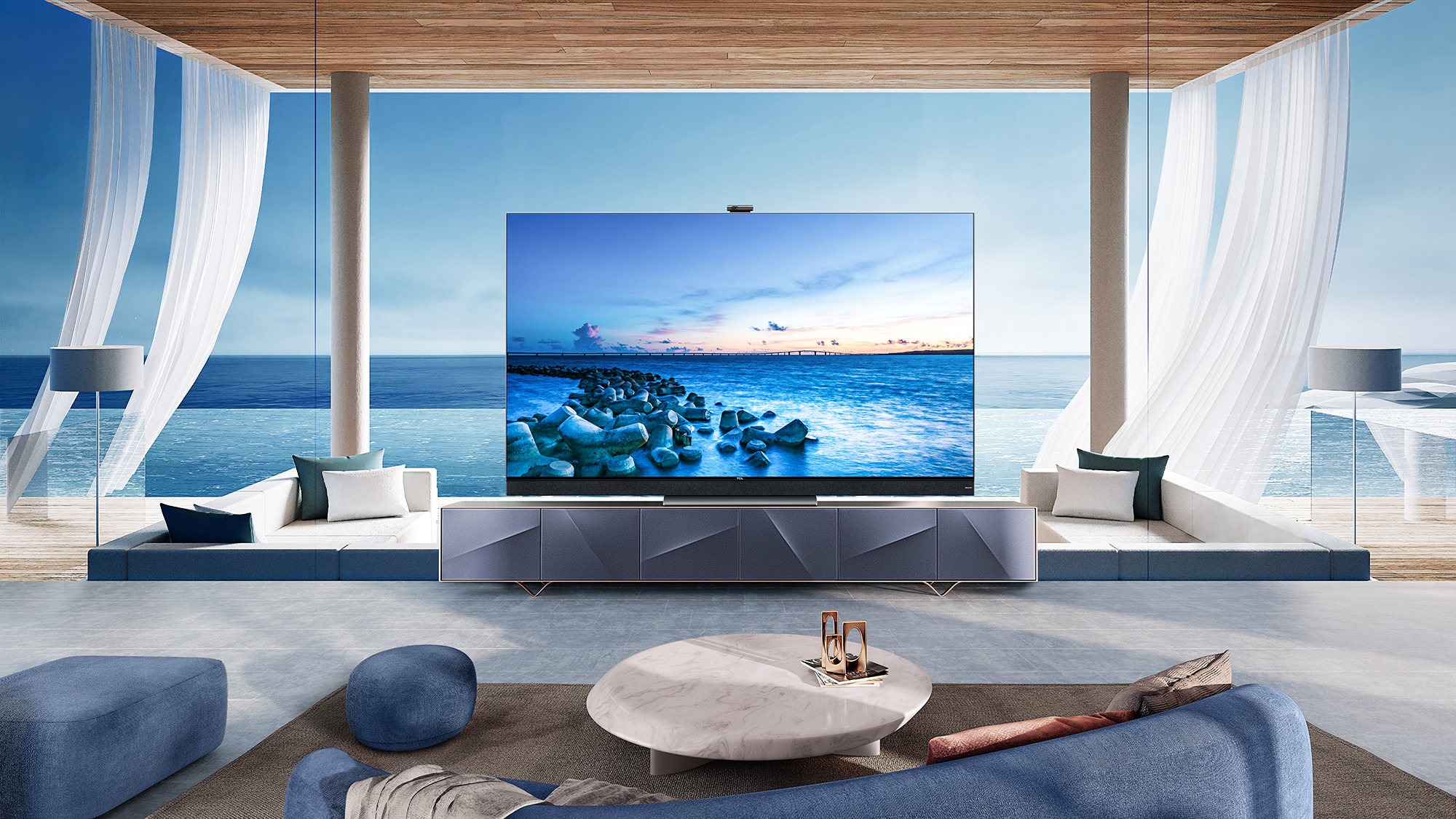
While on audio, two items for rare praise. First is the ability to blank the screen without turning off the TV, a boon when listening to music. And with Google TV onboard you can, of course, ‘cast’ music from any apps on a smart device which support casting.
Second, the TV’s audio sync adjustment goes negative, actually delaying the video if so required. This is no mean feat with an 8K panel, and rare indeed, even though audio-led sync issues are increasingly common with external sound systems. This ability, plus the ‘pass-through’ audio setting, enabled perfect sync via eARC with our external receiver, and full enjoyment of immersive Atmos soundtracks alongside the X925’s image. Top marks here.
Sound Quality TL;DR: The integral Onkyo-branded bar performs well, far beyond standard TV-based audio, though a larger external system will do justice to the X925s visuals.
Other panels to ponder...
We had Samsung’s flagship QN900A running side by side with the TCL X925 – also 8K, also QD, also Mini LED. Both are extraordinarily effective panels. Sometimes the TCL had an edge on hyper-realism, notably for those cityscapes and lush colours.
With the Samsung, however, we were far less often fiddling with the settings to get the best result for any given material; once adjusted to be accurate, it was accurate with everything.
For many prospective buyers the other comparison of interest will be with latest-gen OLED, and here one thing is clear – Mini LED has brought LCD and OLED far closer together in performance.
In a room with ambient lighting, Mini LED wins. In a dimly-lit room, well, we reckon it would go the full 10 rounds and end up on points. For some, the picture-on-glass beauty available from OLED might be the thing that tips the scale.
Final verdict
TCL’s X925 is another series which amply demonstrates how far Mini LED backlighting can take LCD panel technology, now able to challenge OLED on black levels, and even to outshine OLED on High Dynamic Range and colour gamut.
Add the new Google TV interface and the perhaps still dubious merits of 8K, although with excellent upscaling, and the X925 shows how China’s TCL is able to harness the latest technologies in a flagship TV at a competitive price.
Should you buy the TCL X925 Mini LED 8K TV?
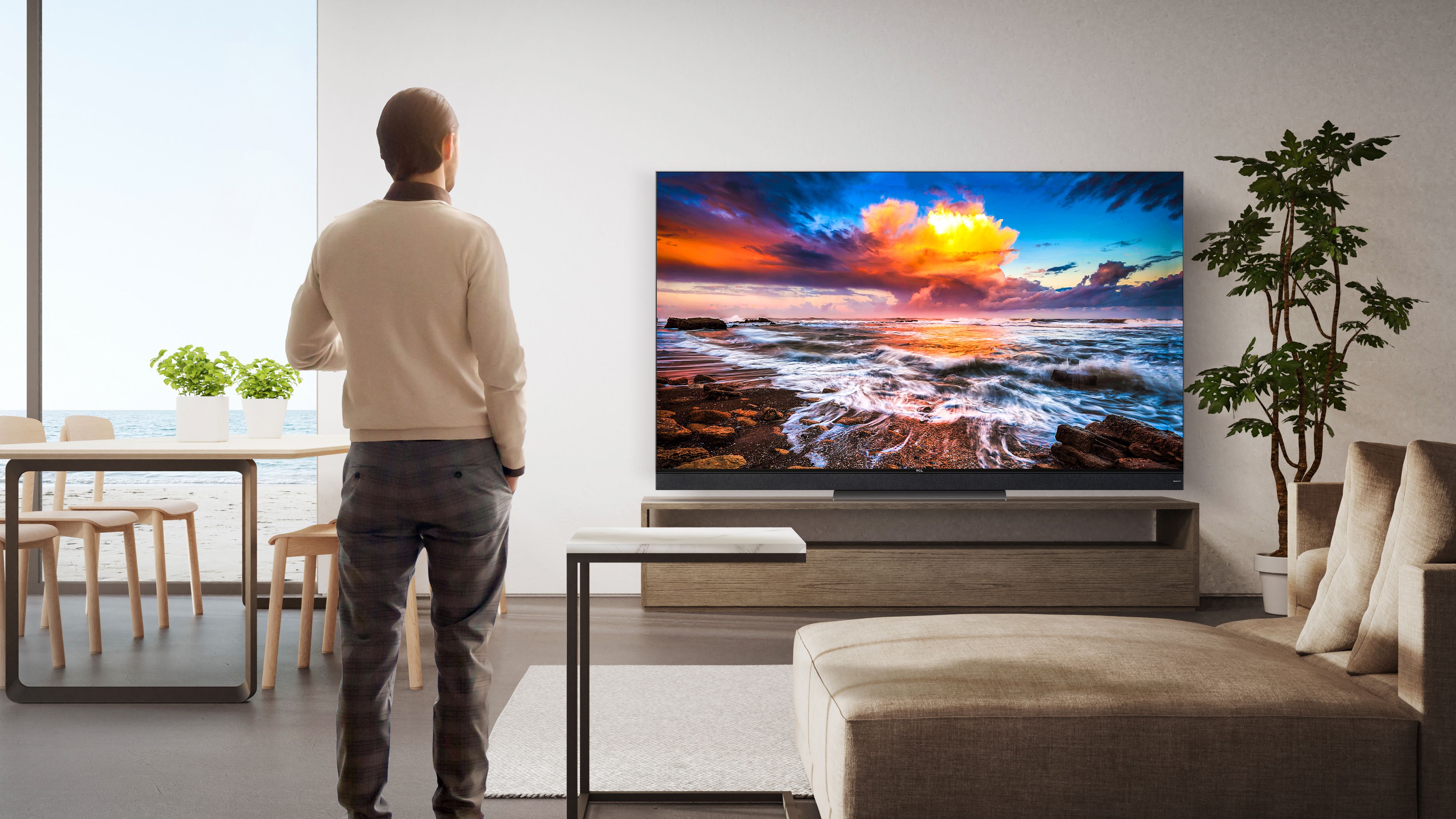
Buy it if...
You want one of the most up-to-date TVs on the market
With Google TV, 8K, and compatibility with things barely available in Australia yet (like IMAX Enhanced), you can be fairly confident this TV will keep pace with changing standards for a good many years.
You want excellent HDR performance
Mini LED is providing true competition to OLED in black levels, High Dynamic Range performance and colour gamut. When OLED first arrived, it trounced the LCD panels of the day. With Mini LED and QD colour behind today’s LCD panels, that’s no longer the case.
You want all the streaming apps
Google TV gives access to everything in the Android TV app store, which includes all key streaming services and music too. The TCL remote even gives direct access to six of these, including its own ‘TCL’ channels.
Don't buy it if...
You want a budget TV.
This is TCL’s flagship, and there are better value offerings in the 4K ranges.
You want a super-slim TV.
The Mini LEDs require a bit of space, and at 24mm thick, the X925 can’t compete with the glass-like sheets available from OLED technology.

Jez Ford is the editor of Australian audiovisual periodical Sound+Image magazine.
